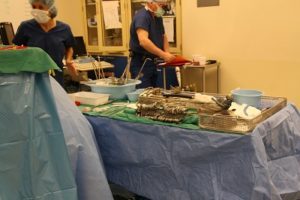1. Unnecessary Double Mastectomy
 A woman in Long Island, NY filed a lawsuit alleging surgical malpractice after she underwent a double mastectomy for apparently no good reason. According to reports, the medical lab had cut corners and mislabeled her tissue sample. The medical tech responsible for the error no longer works for the lab. As a result of this lab mix-up, the doctor then misdiagnosed her condition as breast cancer. When told of her diagnosis, the patient begged the doctor not to let her die. Even after seeking a second opinion about her cancer diagnosis, the doctor, who no longer works for the lab either, suggested that she undergo a double mastectomy. Despite the fact that the Department of Health investigated the incident and found that the lab was in compliance with safety standards and standards of patient care, a lawsuit alleging surgical medical malpractice against both the facility and its medical employees was filed seeking money damages.
A woman in Long Island, NY filed a lawsuit alleging surgical malpractice after she underwent a double mastectomy for apparently no good reason. According to reports, the medical lab had cut corners and mislabeled her tissue sample. The medical tech responsible for the error no longer works for the lab. As a result of this lab mix-up, the doctor then misdiagnosed her condition as breast cancer. When told of her diagnosis, the patient begged the doctor not to let her die. Even after seeking a second opinion about her cancer diagnosis, the doctor, who no longer works for the lab either, suggested that she undergo a double mastectomy. Despite the fact that the Department of Health investigated the incident and found that the lab was in compliance with safety standards and standards of patient care, a lawsuit alleging surgical medical malpractice against both the facility and its medical employees was filed seeking money damages.
2. Wrong Site Surgery on Head
When people say something is easy, they often say “this isn’t brain surgery,” which is meant to suggest that brain surgery is a very serious and complicated medical specialty, which it most certainly is. But of all the important technical matters that a neurosurgeon must take note of during a surgery, telling the “left” from the “right” is not typically a concern. As one might expect, the details of each specific patient’s condition (and whether the affected area is on the left or right) are contained in medical records that the surgeon is of course, required to thoroughly read. Unfortunately for three patents at this particular hospital, this did not happen. In one circumstance, the neurosurgeon began drilling through the right side of the skull, even though the CT scan disclosed cranial bleeding on the left side. In another occurrence, a different surgeon opened the wrong side of an 86 year old man’s skull during an emergency procedure. The man then died three weeks after the surgery.
3. Wrong Lung & Heart Transplant
A 17 year old Mexican immigrant girl who traveled to the United States in search of treatment for a heart condition called restrictive cardiomyopathy was the victim of surgical malpractice involving a heart and lung transplant. Although her blood was Type-O, she was mistakenly given an incompatible heart and a lung from a Type-A donor. Considering that the waiting list for donor organs is so long and the need so great, the fact that a tragic medical error of this sort could have happened in the first place is shocking. When the hospital discovered their surgical error, they began a search for another set of correct blood type organs to transplant, but by then, the patient was in a coma-like state. Two weeks later, although a second transplant was performed, she had already suffered brain damage and other complications that ultimately led to her death. In the time that followed since this wrongful death, the hospital put into place many procedural changes to double-check the compatibility of blood types and to make sure that medical malpractice of this sort hopefully never happens again.
4. Retractor left in man’s abdomen
During a surgery, many medical devices, tools and instruments are used to accomplish the intended goals of the medical procedure. Some items are disposable such as gauze, sponges, towels and needles, while others are not intended to be disposed of, such as tweezers and scissors. But whether disposable or non-disposable, in no circumstance is it ever intended that any foreign surgical objects are to be intentionally left inside of the patient’s body. Unfortunately, in this particular case of a 76 year old man who had surgery to install a shunt to drain fluid from his brain, a large 10 inch metal retractor was, in fact, left behind. It was first noticed by the man’s daughter who said that it appeared that something hard was sticking out beneath her father’s ribs. The man also said that it felt like he had something poking out of his body. But after reporting his pain to the surgical team that had performed the operation, he was told that he should seek some psychiatric counselling and they seemed to suggest that he was lying. Eventually, a CT scan was performed which showed the presence of this large foreign object. Another surgery was then performed to remove the retractor. Although the hospital apologized for the ordeal, the patient filed a lawsuit alleging medical malpractice and the case subsequently settled for an undisclosed money settlement.


